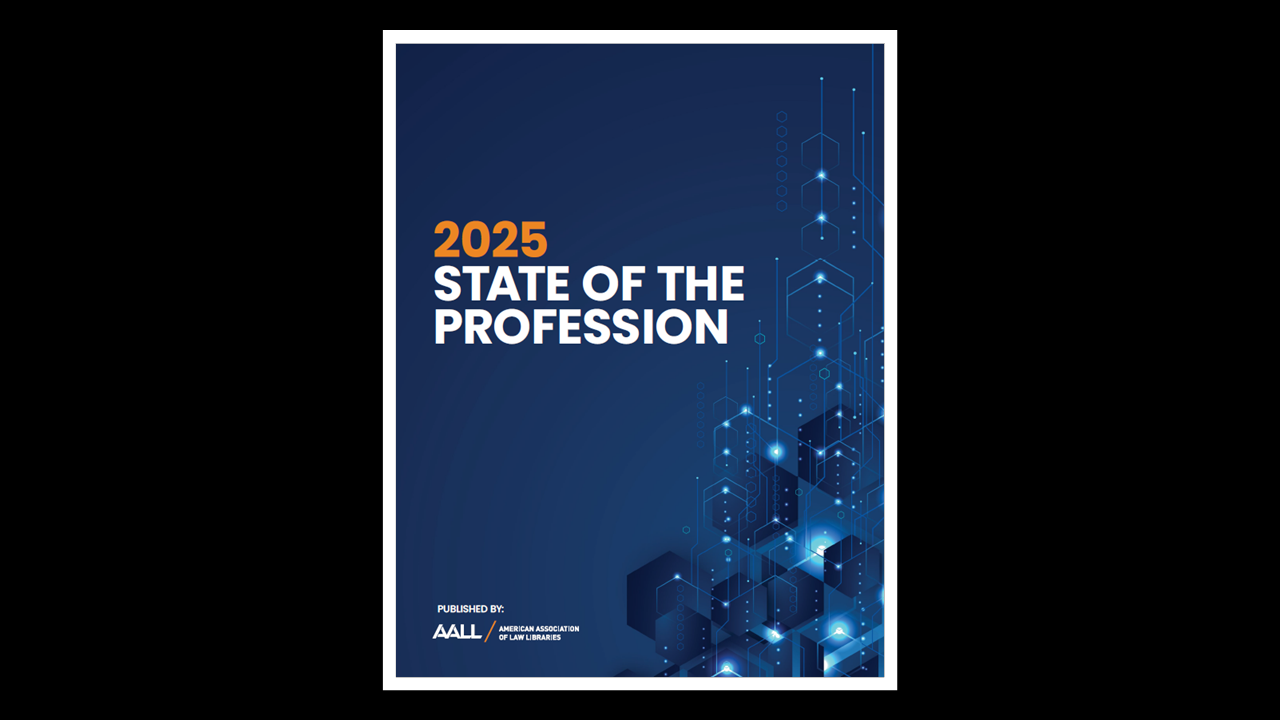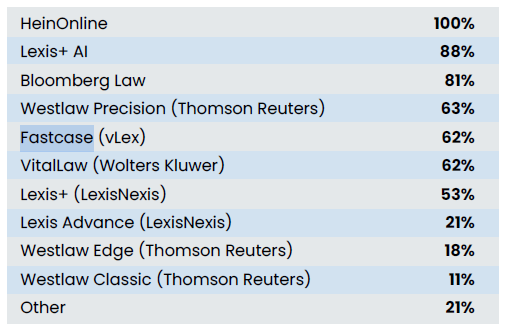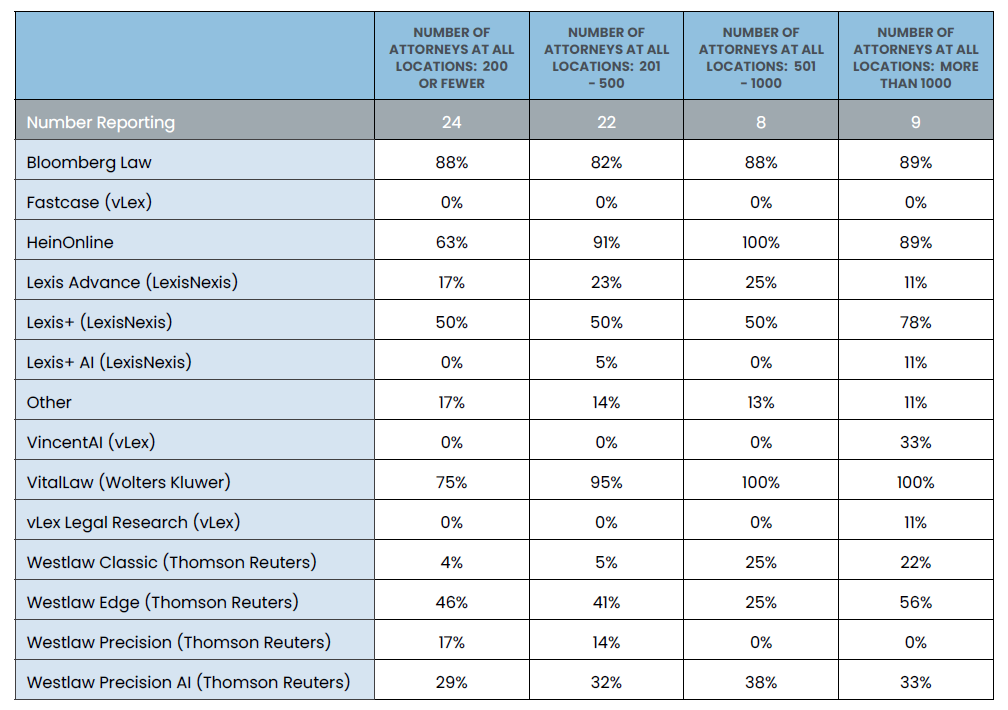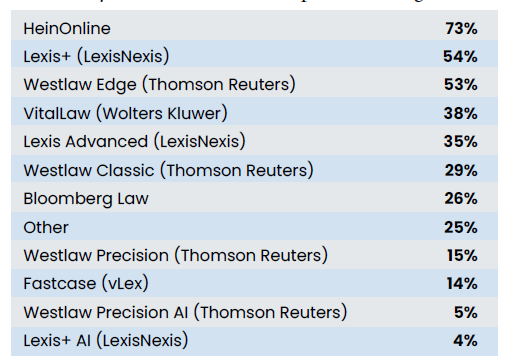Law libraries across academia, private practice, and government are contending with rapid changes in technology, staffing, and service delivery, according to the 2025 State of the Profession report released this week by the American Association of Law Libraries (AALL).
Based on survey responses from 510 legal information professionals across the United States, the fourth edition of the biennial report documents trends in generative AI adoption, professional development, workplace flexibility, digitization, public service, and diversity, equity, and inclusion (DEI) efforts.
The report is organized around the three main types of law libraries: academic, firm/corporate, and government. It comes as the AALL prepares to convene in Portland, Ore., later this month for its annual conference.
“Today’s law librarians are not only experts in legal research, but they are also leading the charge in data analytics, legal technology, and strategic information management,” said AALL President Cornell H. Winston in a statement announcing the report. “This report captures how we are adapting, innovating, and delivering critical value across the legal landscape.”
Related: LawNext: AALL President Cornell Winston on Why Law Librarians Should ‘Be Bold’.
(An important note: Respondents were asked to provide data as of Jan. 1, 2024. Therefore, these findings reflect conditions as they existed 1.5 years ago.)
Academic Law Libraries
Academic law librarians continue to take on expanded instructional and service roles, while also grappling with how to approach emerging technologies like generative AI. Only 27% of surveyed institutions reported having formal policies governing the use of generative AI in legal research, and just 3% require training before students or faculty can access AI-enabled platforms.
Despite that, AI was ranked as the top professional development priority for library staff, with 79% citing AI, machine learning, and prompt engineering as areas of future focus. Other leading topics included teaching and instruction (71%), legal research and writing (56%), and marketing and outreach (41%).
Nearly two-thirds of academic librarians (63%) reported teaching for-credit legal research courses, and nearly half (47%) said teaching is a core responsibility of their position.
Libraries also reported high levels of involvement in faculty research support (95%), law school clinics (90%), and faculty assistant programs (84%). Many also provide services beyond the law school, including to undergraduates, graduate students, and even members of the public.
On the staffing front, 60% of academic law librarians reported having flexible work arrangements, though flexibility was less common among other library staff (48%). Forty-five percent of libraries indicated that they had recently reallocated responsibilities among staff, often due to vacancies or shifting service demands.
The report also notes that while most hiring in the past year was for professional librarian roles (87%), some libraries reported hiring non-MLS staff with specialized skills, such as instructional design, web development, and legal technology support.
In terms of collections, nearly half of academic law libraries offer patron-driven or demand-driven acquisitions. Fewer than a quarter (23%) currently collect generative AI-generated research content for institutional repositories or archives.
Law Firm and Corporate Libraries
Among law firm and corporate libraries, the survey found broader implementation of formal AI policies. Sixty-eight percent of respondents reported having policies in place for generative AI use – well above the academic and government sectors. However, only 30% require staff training before granting access to AI-enabled platforms.
Of the policies that exist, they most commonly address confidentiality concerns, tool accuracy, and usage guidelines for research and client service.
Firm and corporate library directors and staff alike ranked AI as their top area for professional development. Ninety-one percent of staff and 60% of directors cited it as a primary skill to develop.
Other key focus areas included business research (52%), data visualization (46%), and teaching (45%). Directors also emphasized leadership, strategic planning, and vendor management as top skills for the coming years.
Operational data collection is nearly universal, with 88% of firm libraries reporting that they regularly track and share usage metrics. Commonly tracked indicators include reference activity, electronic resource usage, and the breakdown of billable versus nonbillable requests.
SharePoint (74%) and Microsoft Teams (63%) were the most commonly used collaboration platforms.
Firm libraries also play a role in competitive intelligence and business development. Over 70% support client alerts, docket tracking, or news monitoring for attorneys and business development teams. Seventy-one percent are involved in training summer associates, and 60% support DEI efforts within their organizations, often through research support or programming partnerships.
The data also underscore the small scale of many firm libraries. Eighty-five percent operate within organizations that have five or fewer physical locations, while only 7% of respondents are part of firms with more than 10 offices.
Government Law Libraries
Government law libraries, which often serve a mix of legal professionals and the general public, reported limited adoption of AI tools. Only 18% have policies in place governing the use of generative AI, and 93% do not require training before library staff access AI-enabled platforms.
Still, some libraries reported future interest in AI applications, and nearly half (48%) identified AI as a key area for professional development.
A majority of respondents (60%) expect staffing to remain stable in the coming year, with 17% planning to hire and 21% anticipating internal role reassignments.
Budget constraints and limited technological infrastructure remain challenges for many, particularly in digitization and preservation: 40% of respondents reported having no preservation plan, and 35% have large-scale scanning capabilities.
Public service is a central mission for government law libraries. Eighty-four percent are open to the public, and 88% offer research assistance to attorneys.
Services for self-represented litigants are widespread, with 46% offering self-help centers, 31% offering educational programs, and 27% hosting legal clinics.
Many also collaborate with external partners. Sixty-five percent work with other government libraries, while others maintain partnerships with bar associations (63%), legal aid organizations (51%), nonprofits (45%), and academic institutions (39%).
Usage data is frequently reported to multiple stakeholders, including internal staff (61%), budgeting officials (59%), governing bodies (46%), and even judges (22%) or elected officials (15%).
Most Popular Resources
Interestingly, the different types of libraries also differ in the electronic resources to which they subscribe.
Among academic libraries, 100% report subscribing to HeinOnline, with Lexis+ AI and Bloomberg Law being the next most popular.
At law firm and corporate libraries, subscriptions vary by size of firm. Here again, HeinOnline is among the most popular, while at the other end of the spectrum, Fastcase and vLex show little usage, with Fastcase showing zero adoption at any size firm and vLex showing adoption only at the largest firms.
This latter point is of interest given the news this week of Clio’s acquisition of vLex for $1 billion. The report offers no explanation of these numbers, but I would note that they reflect library subscriptions. Given that many attorneys have free access to Fastcase/vLex through bar association affinity programs, that may explain why law libraries do not separately subscribe.
At government law libraries, HeinOnline is again the most popular, followed by Lexis+ and Westlaw Edge.
Broader Themes
Across sectors, the report notes a growing demand for librarians with technical, pedagogical, and leadership skills.
While legal research remains central, today’s law librarians are increasingly engaged in instructional design, knowledge management, competitive intelligence, and digital strategy.
Recruitment challenges persist, particularly in attracting candidates with both legal and technology expertise.
The full 2025 State of the Profession report is available for purchase in print and digital formats through AALL, along with a complimentary executive summary. For more information, visit bit.ly/AALLSOTP.
 Robert Ambrogi Blog
Robert Ambrogi Blog


